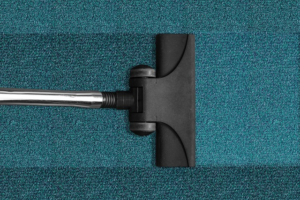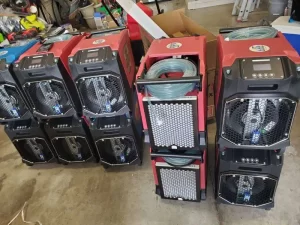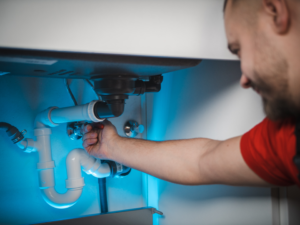Candles are a wonderful way to create a warm and inviting atmosphere in your home. However, they can also leave behind unsightly soot on your walls and ceilings. Removing candle soot can be a daunting task, but with the right tools and techniques, it is entirely possible. In this blog post, we will guide you through the steps of how to remove candle soot from walls and ceilings in your home.
Tools You Will Need
Before you begin, you will need to gather some tools to help you remove the candle soot. Here is a list of the essential tools you will need:
- A vacuum cleaner with a brush attachment
- Microfiber cloths
- Sponge
- Mild soap or detergent
- Warm water
- Rubber gloves
Step 1: Protect Yourself
Before you start cleaning, put on a pair of rubber gloves to protect your hands from the soot. Soot can be messy and difficult to remove, so you don’t want it to come into contact with your skin.
Step 2: Vacuum the Walls and Ceilings
The first step in removing candle soot from walls and ceilings is to vacuum the area. Use a vacuum cleaner with a brush attachment to gently remove any loose soot from the surface. Be careful not to press too hard as you may push the soot deeper into the surface. Make sure you vacuum the entire area thoroughly.
Step 3: Wipe the Walls and Ceilings with a Dry Microfiber Cloth
Next, take a dry microfiber cloth and wipe the walls and ceilings. This will help to remove any remaining loose soot. Make sure you use a clean microfiber cloth for each area you clean. Do not use a wet cloth at this stage as it may spread the soot and make the stain worse.
Step 4: Mix a Cleaning Solution
Mix a mild soap or detergent with warm water to create a cleaning solution. Make sure you read the instructions on the detergent bottle carefully, as some detergents may not be suitable for cleaning walls and ceilings.
Step 5: Clean the Walls and Ceilings
Now it’s time to clean the walls and ceilings. Dip a sponge into the cleaning solution and wring out any excess water. Gently wipe the walls and ceilings with the sponge, being careful not to scrub too hard as this may damage the surface. Work in small sections, rinsing the sponge frequently in the cleaning solution and then wringing it out before continuing.
Step 6: Rinse the Walls and Ceilings with Clean Water
Once you have finished cleaning the walls and ceilings, rinse the sponge with clean water and then wipe the walls and ceilings again to remove any remaining soap or detergent. Make sure you rinse the sponge frequently in clean water and wring it out well.
Step 7: Dry the Walls and Ceilings
Finally, use a clean microfiber cloth to dry the walls and ceilings. Make sure you use a dry cloth as any remaining moisture could cause water stains or damage to the surface. If you have a fan or air conditioning, turn it on to help speed up the drying process.
Tips and Tricks for Candle Soot Removal
- Always test a small, inconspicuous area first before cleaning a larger area.
- Use a light touch when cleaning as scrubbing too hard can damage the surface.
- Be patient and take your time, cleaning candle soot can be a slow process.
- If the soot stain is particularly stubborn, you can try using a commercial cleaner designed for removing soot stains.
- Remember to protect your hands with rubber gloves and wear old clothes that you don’t mind getting dirty.
Which Candles Burn the Cleanest?
Not all candles produce the same amount of soot. In fact, some types of candles are more likely to produce soot than others. Here are a few types of candles that are known to produce more soot than others:
- Paraffin Wax Candles: Paraffin wax candles are made from petroleum, and they tend to produce more soot than other types of candles. This is because paraffin wax is a byproduct of petroleum, and it contains impurities that can lead to soot production.
- Cheap Candles: Cheap candles often contain lower-quality ingredients and wicks that are not designed to burn cleanly. This can lead to a greater amount of soot production.
- Scented Candles: Scented candles are made with fragrances that are added to the wax. These fragrances can release chemicals into the air when the candle is burned, and this can contribute to soot production.
- Candles with Metal Wicks: Some candles have wicks that are made from metal, such as zinc or lead. These metals can react with the flame and produce more soot than other types of wicks.
- Candles that are Burned Improperly: Even high-quality candles can produce soot if they are burned improperly. If a candle is burned for too long or if the wick is not trimmed properly, it can produce more soot.
It’s important to note that even though some types of candles are more likely to produce soot than others, there are ways to minimize soot production. Burning candles in a draft-free area, trimming the wick to 1/4 inch before lighting, and choosing high-quality candles made from natural ingredients can all help to reduce soot production.
If you find yourself unable to remove the soot or a lingering smoke smell is left in your home, get in touch with a fire damage restoration company to discuss more aggressive steps that can be taken to restore your home. At TN Flood Kings, we have years of experience in removing tough smoke smells from homes.








